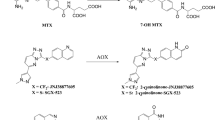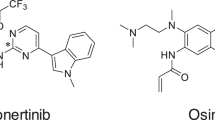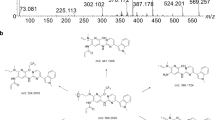Abstract
The anti-cancer prodrug ifosfamide (IF) is metabolized by liver P450 enzymes by two alternative pathways. IF is activated to 4-hydroxy IF (4-OH-IF), which ultimately yields the alkylating mustard isophosphoramide, whereas IF N-dechlororethylation inactivates the drug and produces the neurotoxic metabolite chloroacetaldehyde (CA). Both reactions are catalysed by multiple liver P450 enzymes in vitro in isolated rat liver microsomes. The present pharmacokinetic study investigates the potential for modulation of these alternative pathways of IF metabolism in vivo using the adult male Fischer 344 rat model. Rats were treated with IF alone or in conjunction with various P450 inducers and inhibitors in an effort to improve the balance between drug activation and drug inactivation. Plasma concentrations, areas under the curve (AUC) and half-lives were calculated for 4-OH-IF and CA, allowing estimations of the extent of IF activation and deactivation/toxification. Induction of liver P450 2B enzymes by 4-day high-dose phenobarbital (PB) pretreatment significantly decreased the fraction of IF undergoing 4-hydroxylation (AUC(4-OH-IF)/AUC(4-OH-IF)+AUC(CA)), from 37% to 22% of total metabolism (P < 0.05), consistent with in vitro findings that the PB-inducible P450 enzyme 2B1 plays a major role in IF N-dechloroethylation. Pretreatment with the P450 3A inducer dexamethasone proportionally decreased the AUC for both IF metabolites, without any net impact on the fraction of IF undergoing metabolic activation. By contrast, the P450 2B1 inhibitor metyrapone preferentially increased the AUC for the 4-hydroxylation pathway in 3-day low-dose PB-induced rats, thereby increasing the total fraction of IF metabolized via the activation pathway from 36% to 54% (P < 0.05), whereas the P450 inhibitors orphenadrine and troleandomycin had no significant affect on AUC values. These findings demonstrate specific roles for P450 2B and 3A enzymes in catalysing these pathways of IF metabolism in vivo, and demonstrate the potential for modulation of IF's alternative metabolic pathways in a therapeutically useful manner. These studies also highlight several clinically relevant drug interactions that may occur during concomitant administration of IF with drugs and other compounds that modulate hepatic P450 enzyme levels.
This is a preview of subscription content, access via your institution
Access options
Subscribe to this journal
Receive 24 print issues and online access
$259.00 per year
only $10.79 per issue
Buy this article
- Purchase on Springer Link
- Instant access to full article PDF
Prices may be subject to local taxes which are calculated during checkout
Similar content being viewed by others
Author information
Authors and Affiliations
Rights and permissions
About this article
Cite this article
Brain, E., Yu, L., Gustafsson, K. et al. Modulation of P450-dependent ifosfamide pharmacokinetics: a better understanding of drug activation in vivo. Br J Cancer 77, 1768–1776 (1998). https://doi.org/10.1038/bjc.1998.295
Issue Date:
DOI: https://doi.org/10.1038/bjc.1998.295
This article is cited by
-
Variations in schedules of ifosfamide administration: a better understanding of its implications on pharmacokinetics through a randomized cross-over study
Cancer Chemotherapy and Pharmacology (2007)
-
Chloroacetaldehyde: mode of antitumor action of the ifosfamide metabolite
Cancer Chemotherapy and Pharmacology (2006)
-
Cytotoxic chemotherapy: Advances in delivery, pharmacology, and testing
Current Oncology Reports (2000)



